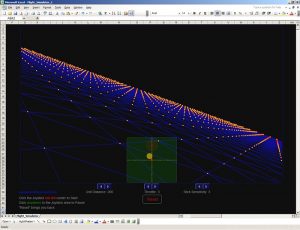The first topic on #ONL191 covers online participation and digital literacies. One of the pieces of suggested reading presents a model by White and Le Cornu, developed in 2011, to categorise users as Visitors or Residents of the digital world. I liked this description, and think that it has a lot of applicability. The two roles are also presented without judgement. A post by one of my colleagues on the course, Sara Ihlman, provides some more background to this description and where it developed from.
One of the drivers for White and Le Cornu to propose this new description was the broader switch from comparing digital skills to language learning (Prensky’s native/immigrant approach), to instead talking about digital literacy, and indeed literacies in the plural. I find that I don’t have a good grasp on this distinction, and so that is what I will discuss now.
On its own, literacy usually has two meanings, the first being the ability to read and write, and the second referring to competence or knowledge in a particular area. Language is a communcation system, and it is common to refer to computer programming languages, for example.
One of the first times I came across the term ‘computer literacy’ (which I assumed to be a precursor of the phrase ‘digital literacy’) was in the acronym CLAIT (Computer Literacy and Information Technology). This was the name for a series of courses in the UK covering basic computing skills such as how to use word processors and spreadsheets. The computer literacy covered in the initial courses was simply the ability to use these tools in standard ways, for example, writing a letter in a word processor. The approach promoted the tool over understanding, as you don’t have to know how to program a spreadsheet to be able to use it. At some point, this approach hits limits, as understanding the kind of things that computers can do can increase dramatically the types of things you can envisage doing with spreadsheets (including building flight simulators!).
 A first flight simulator in Excel, by George Lungu (excelunusual.com)
A first flight simulator in Excel, by George Lungu (excelunusual.com)
A first flight simulator in Excel, by George Lungu (excelunusual.com)
In White and Le Cornu’s paper, they provide a short summary of how digital literacy has been defined and used, which I quote here (without the references included in the original):
-
Mastering ideas, not keystrokes
-
Conceptual definitions as distinct from standardized operational definitions
-
Individuals’ ability to participate in a multimodal culture
This sounds like the primacy of understanding over implementation. Or perhaps I could rephrase this as the lowering in importance (indeed relevance, in this description) of technical competence, and an increase in the importance of competence in media studies. These definitions are a long way from the literacy of CLAIT, and its modern replacements. The ability to use digital tools is assumed and is not considered a part of the definition.
In fact, I might go so far as to say that this is a description of a more general media literacy, but now more obviously including the ‘writing’, or active, aspect that had once been limited to journalists in mass media. In that context, I can see that this is indeed a literacy, rather than a language, with the digital implicitly meaning ‘digital media’.